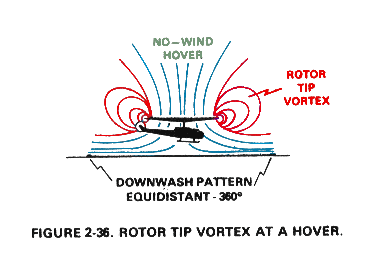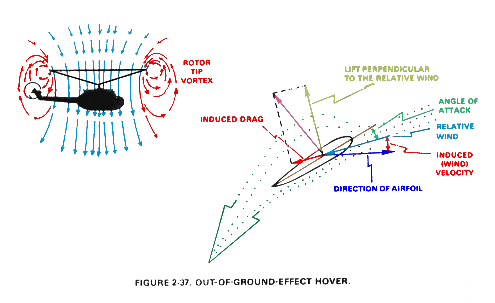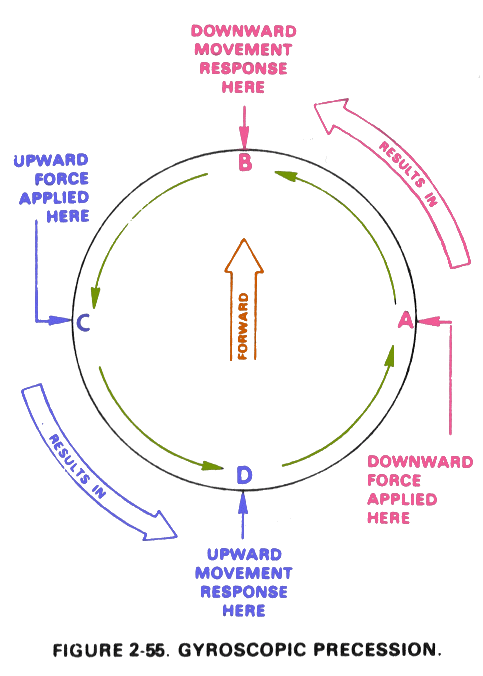vina wrote:Shubham wrote:The other one
Q. How is motion of helicopter effected? Is it differential pitch, tilt of rotor disc? What happens to the fuselage?
Ans. The final reason why helicopter moves in 2D plane is due to rotor disc tilting in that direction ( for forward motion , rotor disc is lowest at 12 o clock point) and so on. This in turn is achieved by pilot applying differential pitch ( he pushes cyclic forward, which is translated to swash plate acting to make 9 o clock point lowest- minimum pitch angle at 9 o clock and maximum pitch angle at 3 o clock, which actually results in 12 o clock part of rotor disc becoming lowest due to gyroscopic precession). The reason why the physical tilt of rotor disc is neither done nor required because the blades are flexible hence the same affect us achieved in an easier manner by giving cyclic pitch change.
Yes exactly. Very well explained. The reason why the rotor disc changes orientation is because either the blades flex or move due to the flapping hinges , and the rotor cone changes orientation .
You a pilot Sir ?
The effect on fuselage - does it tilt forward when helicopter is moving forward ?
It depends on type of main rotor system. In underslung or teetering type of main rotors , there is a very prominent lag in fuselage following the rotor disc ; in rigid/semi rigid rotors (ALH) it is quite fast. So for any significant rotor disc attitude change, there is a fuselage change, the time lag depends on type of rotor system.
But for quick inputs, in a say teetering rotor, the fuselage will not be affected.
Oh thanks. I guessed right then. I would suggest that a fully hinged rotor (teetering is semi rigid ) the hull would be rather well isolated from the rotor attitude.
Shubham wrote:Q. what happens when you hover a helicopter with big wall on your left ?
Lets rephrase this question to a 1000 foot vertical cliff instead of wall, so that you don't have ground effect. What will the helicopter do ? From your previous answer just hover in the same spot without any motion ?
Remember, due to the cliff, the rotor downwash will be moving faster downwards between the cliff and helicopter than on the other side.
The explanation that I have considered is not considering ground effect. The ground effect affects the rotor disc uniformly ( whole 360 degree, all part of rotor disc have reduced inflow angle thus higher angle of attack).
In free air hover next to a cliff, the 9 o clock portion of the rotor disc is now experiencing more amount of downwashed air which is redirected to flow back from bottom of rotors, way up along the cliff and back down to the rotors. To use technical terms the tip vortex are intensified. This reduces lift. This phenomenon is called recirculation since downwashed air is circulated back.
Just for understanding, let us consider a plane 0.5 m about rotor disc. Previously the sector of say 11 o clock to 7 o clock was freely receiving air towards the rotors; now that volume becomes restricted due to presence of cliff, so the air has to flow in this sector at higher speeds since we have the helicopter maintaining position and height. This as per Bernoulli, the presence of cliff creates a more lower pressure region here wrt when there was no cliff. This will cause larger amount of air to be sucked up from below the rotors from the sector of 7 o clock to 11 o clock.
In my understanding the conditions which results in max lift (actually higher AoA) is generated by rotors are - fresh, undisturbed, no velocity air on top of rotors ; opposition to downward flow of air after passing down from rotors.
can't answer first one.
So either in ground effect or not helicopter will move parallel to obstruction.
Effect on fuselage.
I Re read about this. It is called as Control Power - how much effective cyclic is in changing fuselage attitude.
It is highest in Rigid rotors(ALH), followed by fully articulate (Chetak,mi 17), least in teetering (Sioux). Another way to say is that, the fuselage attitude change depend on the distance between main rotor shaft and point where cyclic force is effective being applied ( flapping hinge in case of articulate rotors).
The interesting thing and the importance of this question- fuselage attitude change is that; more the fuselage change capability,more is the manoeuvrability as well as speed range, this is why ALH is rigid rotors , allows great manoeuvrability.



